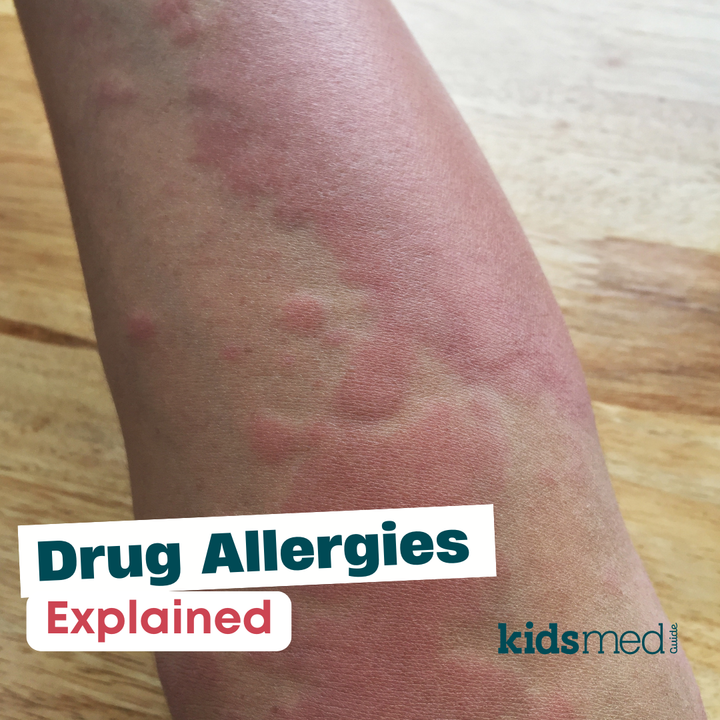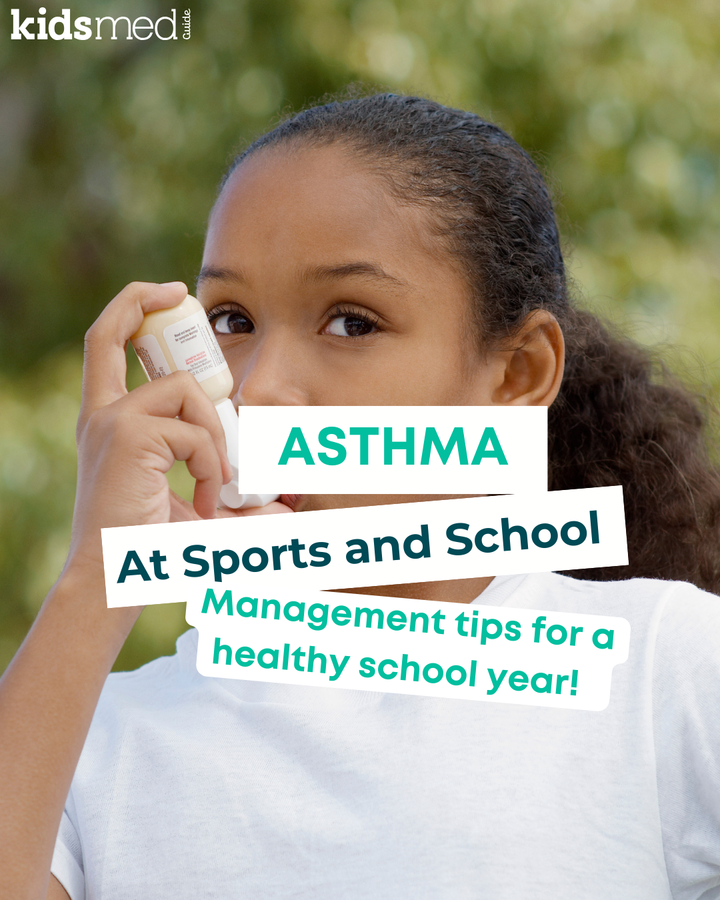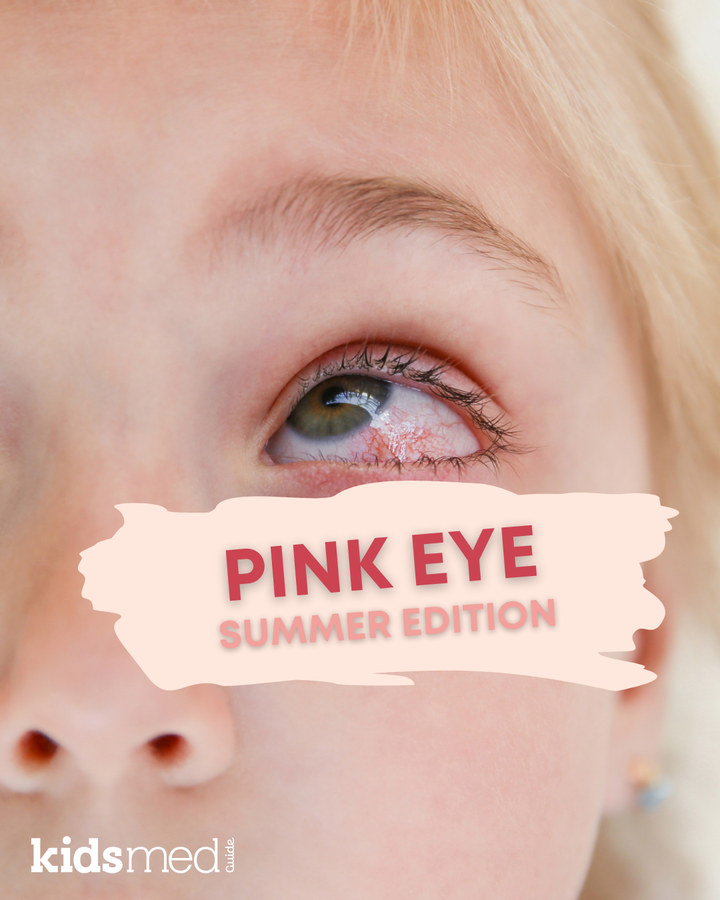Managing Seasonal Allergies During Ragweed Season
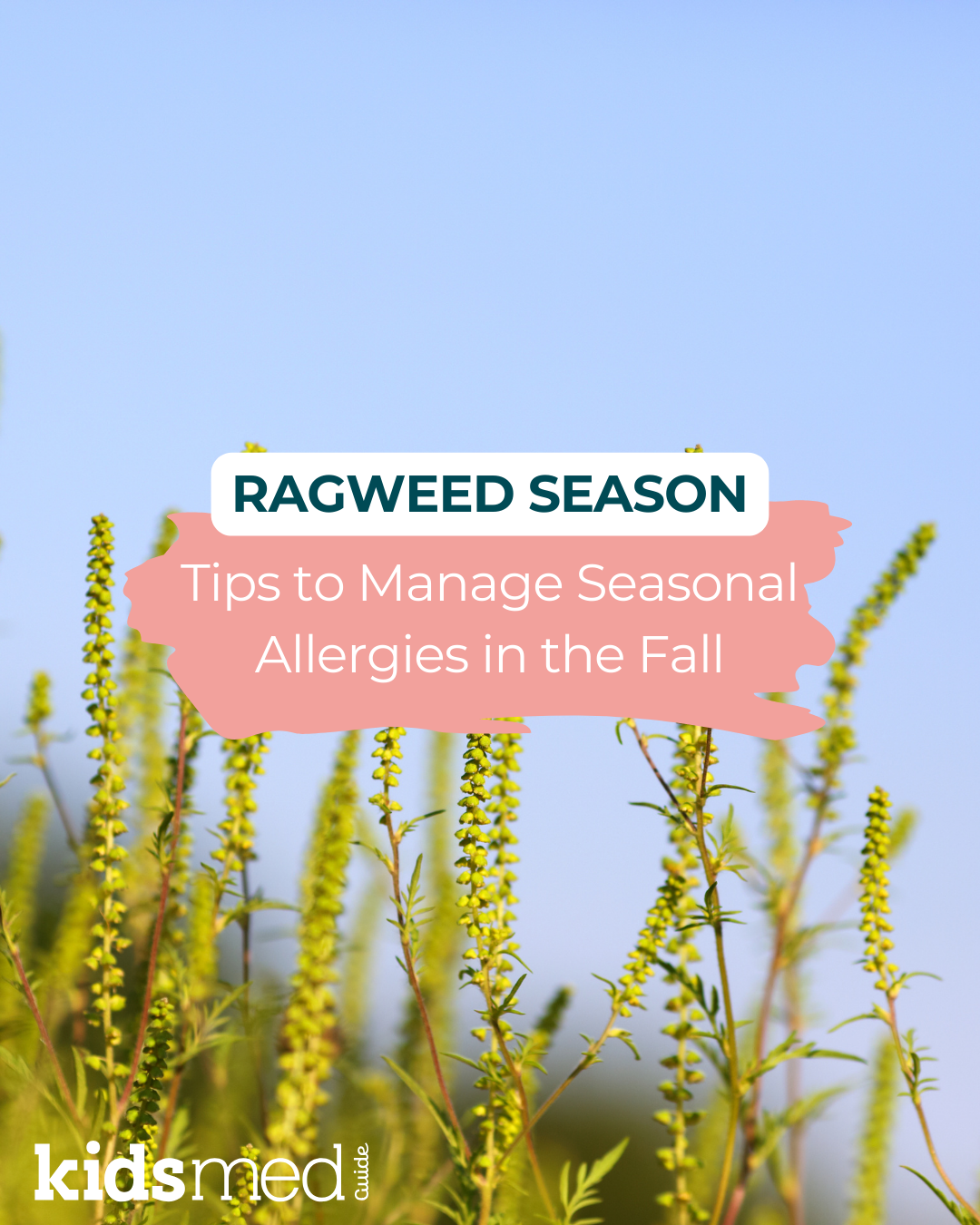
My kids have been back in school for just 7 days, and they already have runny noses and congestion. You know that old saying, the only things certain in life are death and taxes? I’d add laundry and runny noses to that!
Fall can be a tricky time to determine the cause of a runny nose and nasal congestion. Viral colds are definitely common as kids return to school and are in close contact with others. However, in many parts of the country, fall allergies are also a concern!
Ragweed pollen is the most common fall allergen, and it peaks just as kids are starting new routines. This guide covers what parents need to know about ragweed allergies, how to recognize symptoms, and how to help kids feel better during this sneezing season.
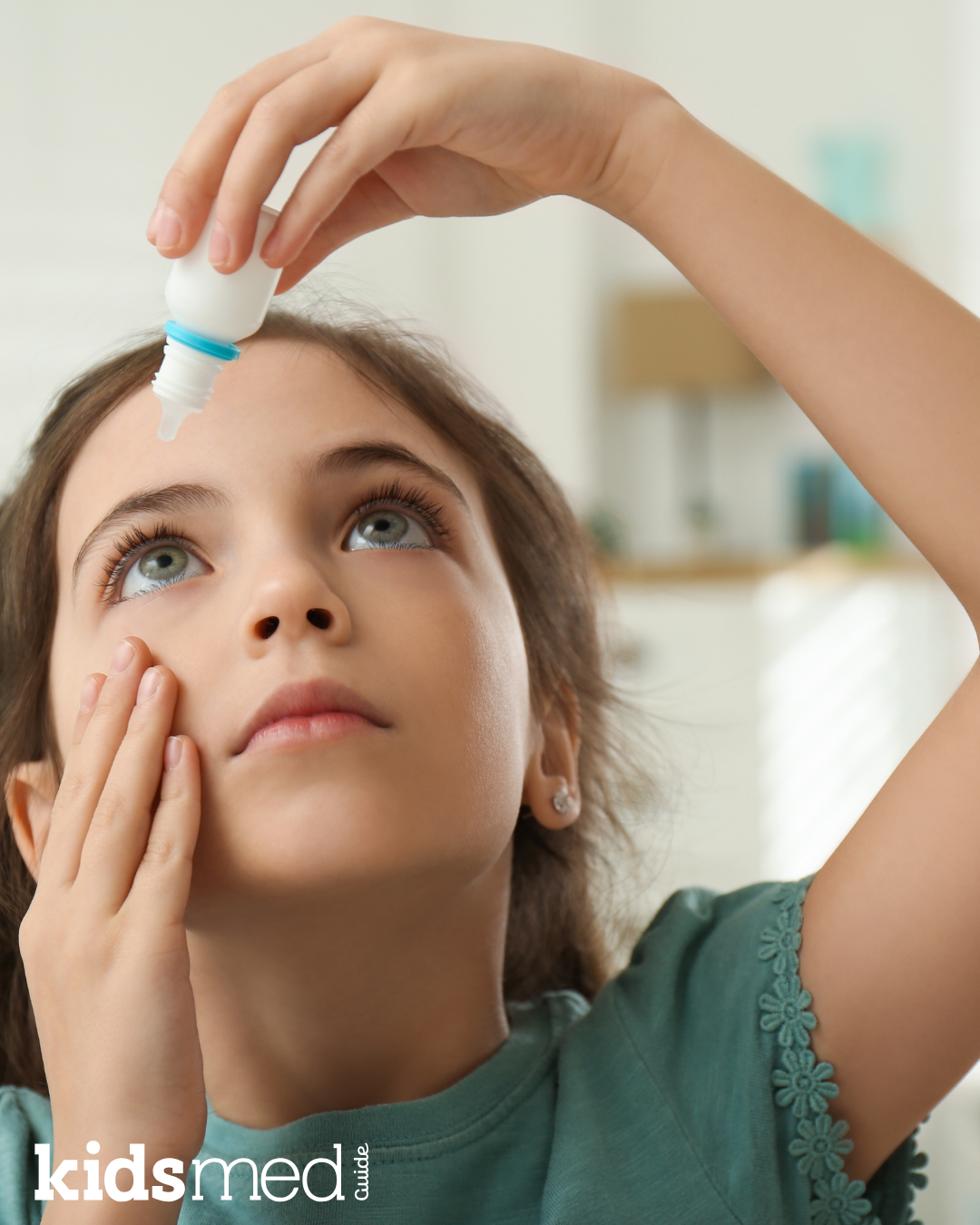
Why Ragweed Allergies Are Common in Fall
Ragweed plants release pollen starting in late August and can continue through October. These tiny grains are light and travel far in the air, making it nearly impossible to escape exposure. For sensitive children, ragweed can set off classic seasonal allergy symptoms right as the weather starts to cool.
Because ragweed season overlaps with cold and flu season, parents often confuse allergy symptoms with viral illness. That’s why recognizing ragweed allergies early is important for managing seasonal allergies effectively.
Recognizing Ragweed Allergy Symptoms in Children
Ragweed allergy symptoms often include:
- Sneezing fits that seem never-ending
- Clear, watery, runny nose
- Nasal congestion and postnasal drip
- Itchy, watery, or red eyes
- Scratchy throat or coughing
- Worsening asthma symptoms (for kids with asthma)
- Worsening symptoms after playing outside
Unlike colds, ragweed allergies don’t cause fever, body aches, or thick yellow/green mucus. Allergies are also more likely to last for weeks instead of a few days. If your child seems to get “sick” every fall like clockwork, allergies may be to blame.
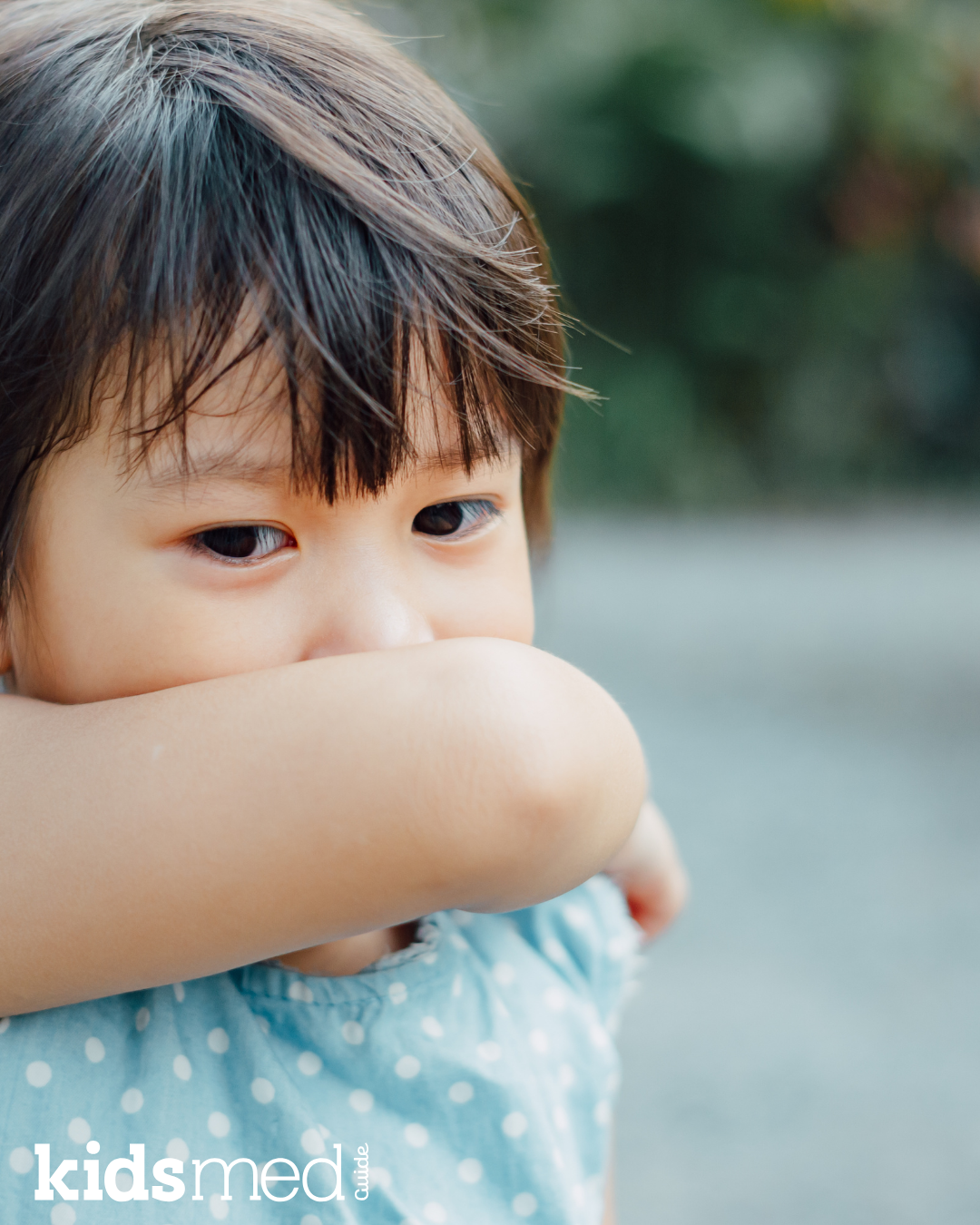
Effective Strategies for Managing Seasonal Allergies
Limiting exposure to ragweed pollen
- Keep windows closed in the house and car
- Run an air purifier with a HEPA filter in your child’s bedroom
- Encourage kids to shower and change clothes after playing outdoors
- Use online pollen trackers or weather apps to monitor daily counts
Check out our comprehensive guide on avoiding allergies and treating them without medicine!
Over-the-counter and prescription options
Sometimes, avoiding allergens isn't possible, and children still react despite the best prevention efforts. That’s when you should consider allergy medicine.
Antihistamines (like cetirizine and loratadine) can help reduce sneezing and itching. Nasal steroid sprays may relieve inflammation and nasal congestion, while a saline nasal spray can clear mucus and make breathing easier. Allergy eye drops are used to treat itchy, watery eyes.
When choosing an allergy medicine, always opt for children’s versions and verify the age suggestions and dosing with your pediatrician or pharmacist. Some kids might require prescription options if symptoms are severe.
Supporting children at school and outdoors
- Talk with the school nurse about your child’s allergies, especially if they impact their school day. They may need extra hand-washing or other prevention measures while in class.
- If your child also has asthma, ensure there’s an up-to-date asthma action plan on file at the school.
- Make sure older children or teens know when and how to take their medication.
- Pack extra tissues, eye drops, or saline nasal spray for quick relief during school sports.
When Allergies Impact Asthma
Ragweed allergies can worsen asthma symptoms, leading to increased coughing, wheezing, and shortness of breath. If your child uses a rescue inhaler more often during ragweed season, that’s a red flag.
Preventive asthma medications, like inhaled corticosteroids, may need adjustment during peak pollen months. Talk to your child’s doctor about proper allergy medicine and add it to your child’s asthma action plan.
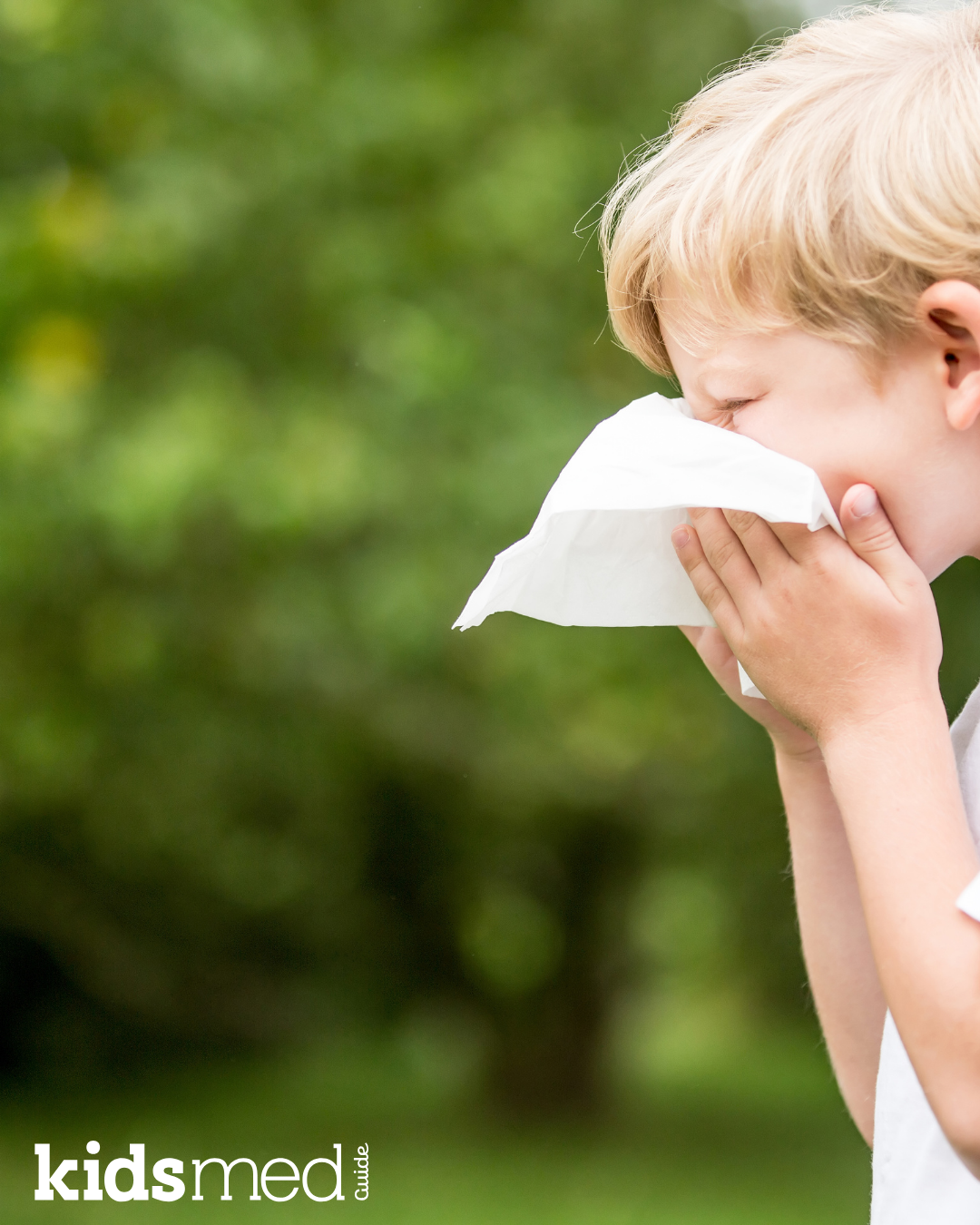
Preparing Families for Ragweed Season
Kids can “outgrow” allergies, and the severity of their allergies may change from year to year. If it’s bad this fall, it might not always be that way! However, if your child suffers from allergies, they will likely recur annually in a seasonal pattern.
If your child has a history of fall allergies, here are some tips to stay ahead of them and be prepared each season:
- Schedule an allergy or asthma check-up before school begins
- Start taking allergy medicines (like antihistamines) a few weeks before peak season starts
- Update school health forms with any new medications or diagnoses
- Teach kids to recognize their own symptoms and speak up if they feel unwell
Conclusion
Fall is for football and apple picking, not ragweed! Unfortunately, many kids start showing allergy symptoms just as school begins and viruses start spreading in the classroom - a double whammy.
By identifying ragweed allergy symptoms early, minimizing exposure, and using safe and effective allergy medications, parents can help children stay comfortable and remain sneeze-free.
FAQ Section
What are the most common ragweed allergy symptoms in children?
Sneezing, itchy eyes, runny nose, congestion, and cough are the most common symptoms. Symptoms may also worsen asthma.
How can parents reduce pollen exposure during the fall?
Keep windows closed, use HEPA filters, promote hand washing and showering after outdoor play, and track daily allergen counts and air quality.
Are over-the-counter allergy medications safe for kids?
Yes, antihistamines, nasal steroids, and eye drops are available and many are suitable for children as young as age 2, available in formulations designed for kids. Always double-check the ingredients and age recommendations, and confirm the dosing with your pediatrician or pharmacist.
Can ragweed allergies trigger asthma attacks?
Yes, ragweed pollen is a common trigger for asthma. Children with asthma might require closer monitoring and adjustments to their medication. Review your child's asthma action plan with their healthcare provider.
How do I prepare my child for ragweed allergy season at school?
Update school health forms, communicate with the nurse and teachers, and ensure kids know how to handle their symptoms and medications. If your child has chronic fall seasonal allergies, start allergy medicine early, before peak season.
The following references were used to compile this information:
Allergy Medicine for Children. (2013, May 29). HealthyChildren.Org. https://www.healthychildren.org/English/health-issues/conditions/allergies-asthma/Pages/Allergy-Medicines.aspx
Cohen, B. (2023). Allergic Rhinitis. Pediatrics In Review, 44(10), 537–550. https://doi.org/10.1542/pir.2022-005618
Indolfi, C., Klain, A., Giudice, M. M. del, & Tosca, M. A. (2025). Paediatric Allergic Asthma: Risk Factors, Diagnosis, Control, and Treatment. Children, 12(6), 713. https://doi.org/10.3390/children12060713
Philadelphia, T. C. H. of. (n.d.). Seasonal Allergies: Keeping Symptoms in Check | Children’s Hospital of Philadelphia. Retrieved September 8, 2025, from https://www.chop.edu/news/health-tip/seasonal-allergies-keeping-symptoms-check
Seasonal Allergies in Children. (2023, July 25). HealthyChildren.Org. https://www.healthychildren.org/English/health-issues/conditions/allergies-asthma/Pages/Seasonal-Allergies-in-Children.aspx

